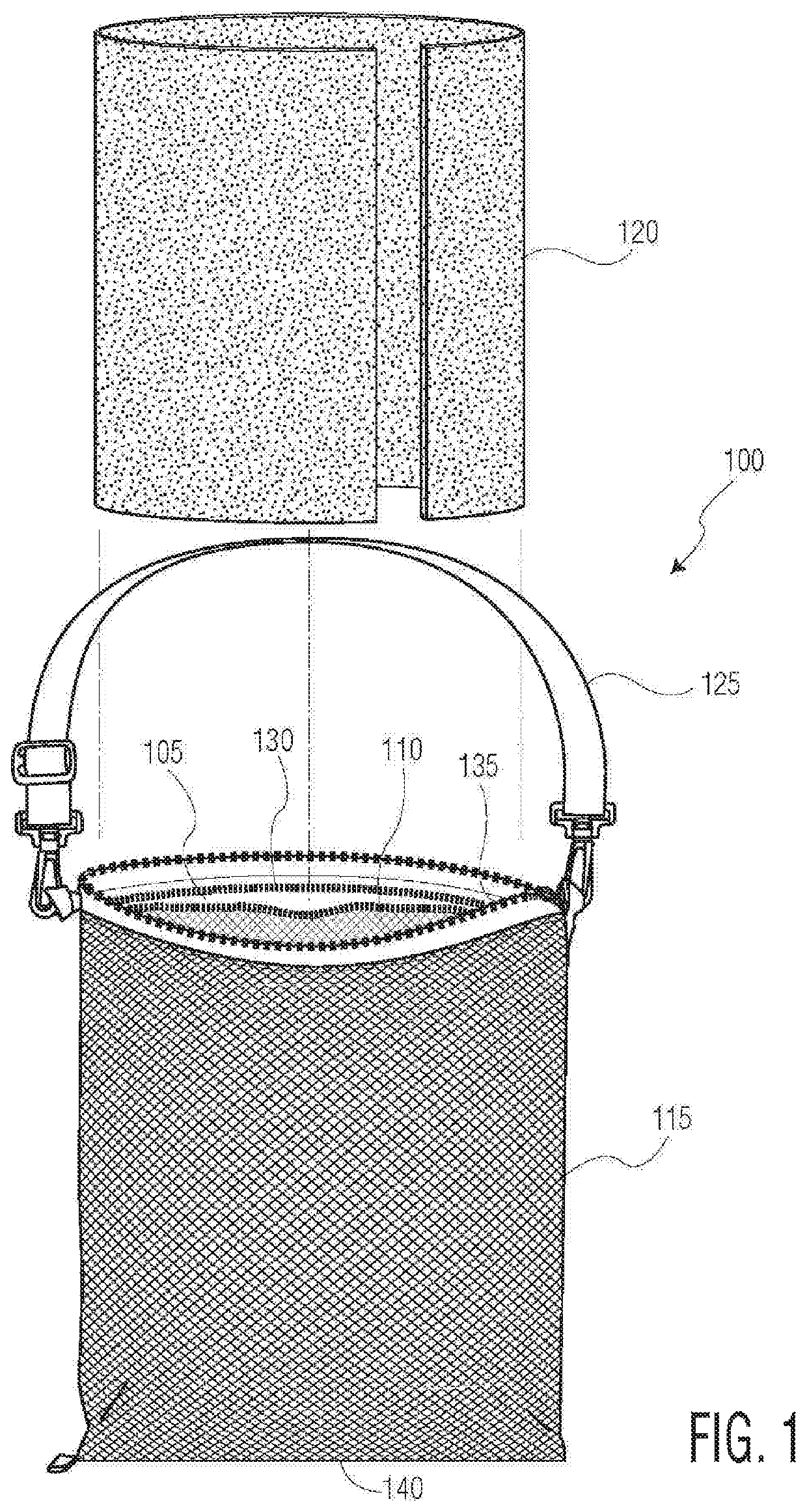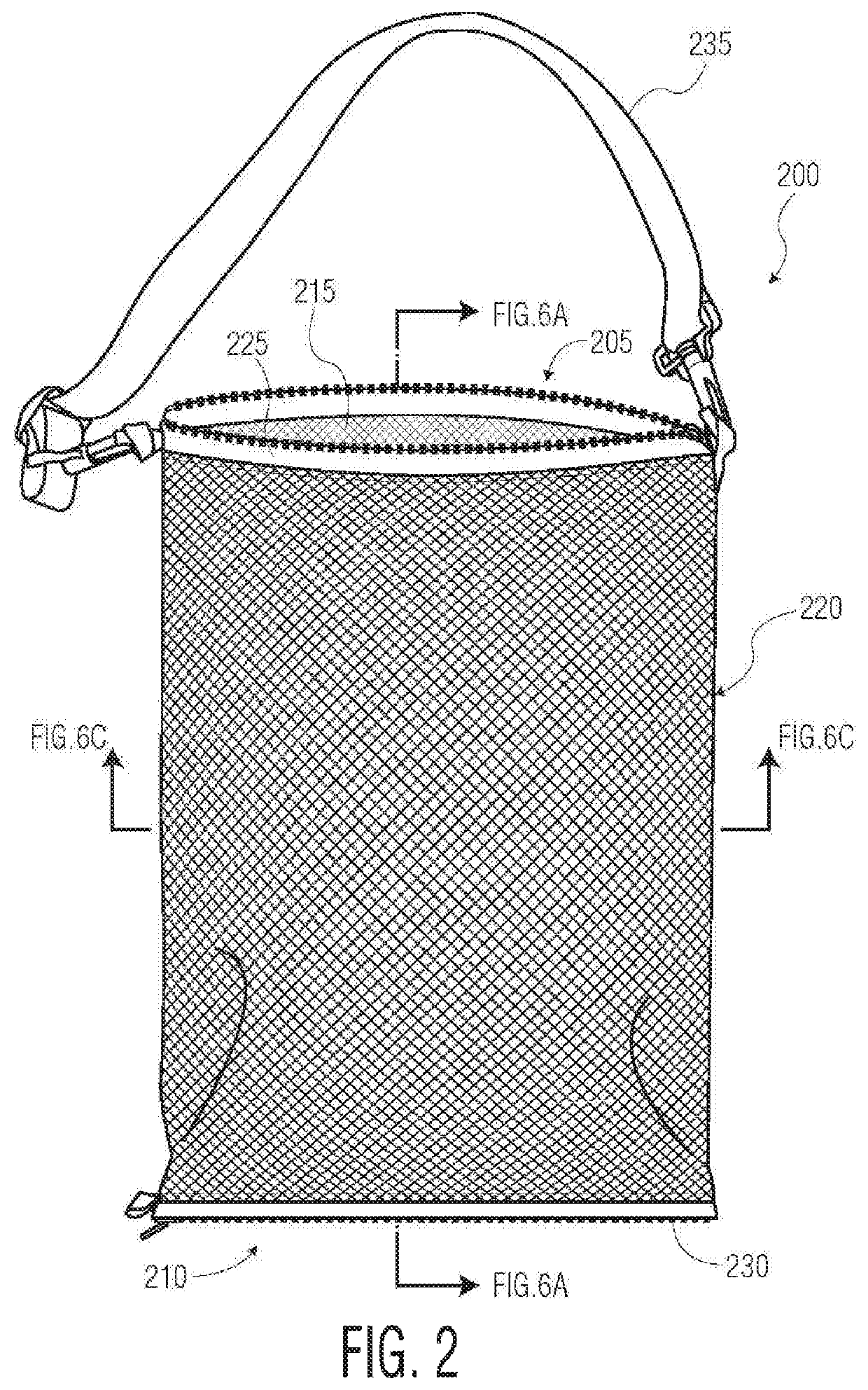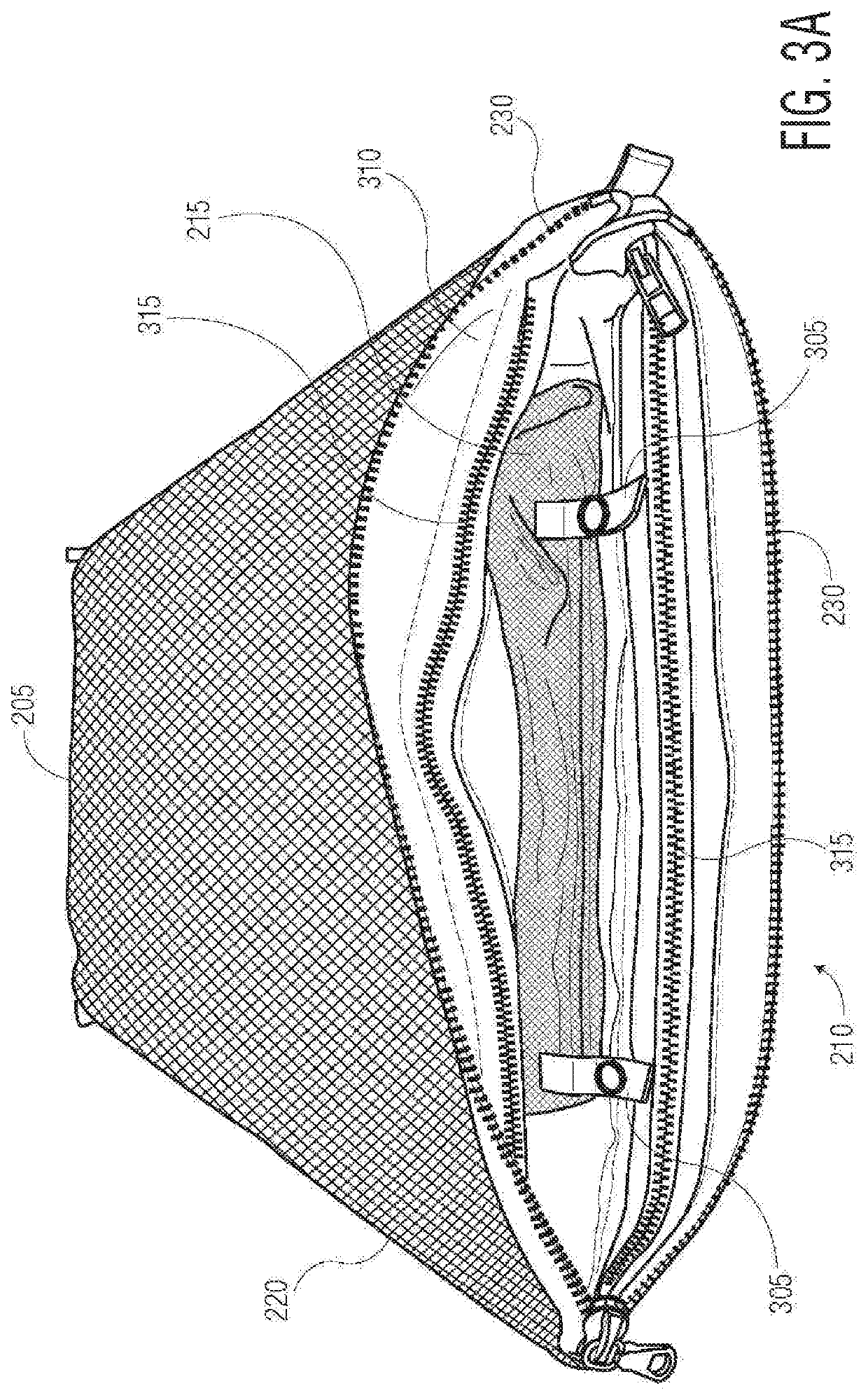System for and method of containing unpleasant odors during travel
a technology of unpleasant odors and odors, which is applied in the direction of filtration separation, container preventing decay, separation process, etc., can solve the problems of insufficient ways of dealing, inconvenient cleaning, and increased problems, and achieve the effect of promoting greater surface area conta
- Summary
- Abstract
- Description
- Claims
- Application Information
AI Technical Summary
Benefits of technology
Problems solved by technology
Method used
Image
Examples
##able embodiment
Non-Extendable Embodiment
[0030]Referring now to FIG. 1, a non-extendable embodiment of the sack 100 of the present invention includes a top opening 105, a first container 110, a second container 115, an activated carbon filter 120, and a strap 125. The first container 110 includes a first sealable rubberized zipper 135. The second container 115 includes a zipper 130. Preferably, the zipper 130 that holds the activated carbon filter in place would be a circumferential zipper—meaning it goes around the inside of the sack 100. In this non-extendable embodiment, the activated carbon filter 120 is inserted into the top opening 105 and positioned between the outside wall of the first container 110 and the inside wall of the second container 115 in a mesh filter container which is built into the outside portion of the first container 110 or the mesh filter container is built into the inside portion of the second container 115. Alternatively, a separate mesh filter container (not shown) cou...
extendable embodiment
[0031]Referring now to FIG. 2, in another embodiment, the invention is preferably a rectangular sack 200 with two sealable openings, a top opening 205 and a bottom opening 210. The size of the sack was selected to easily accommodate up to men's size 12 sneakers. The shape of the rectangular sack 200 is preferable because the vast majority of travel packs are rectangular in shape (suit cases, duffle bags, luggage, carryon luggage, backpacks etc.) and configuring the current invention in the shape of a rectangle allows the sack to be easily packable within other luggage. Most major airlines require the sizing limits of carry-on bags and personal items to rectangular shaped luggage. The sack is designed to fit conveniently into the luggage limits (carry on and personal item) of all major airlines.
[0032]The design of the sack 200 includes a first container 215 and a second container 220. Both containers. i.e., the first container 215 and the second container 220, serve different purpose...
PUM
| Property | Measurement | Unit |
|---|---|---|
| compress | aaaaa | aaaaa |
| time | aaaaa | aaaaa |
| size | aaaaa | aaaaa |
Abstract
Description
Claims
Application Information
 Login to View More
Login to View More - R&D
- Intellectual Property
- Life Sciences
- Materials
- Tech Scout
- Unparalleled Data Quality
- Higher Quality Content
- 60% Fewer Hallucinations
Browse by: Latest US Patents, China's latest patents, Technical Efficacy Thesaurus, Application Domain, Technology Topic, Popular Technical Reports.
© 2025 PatSnap. All rights reserved.Legal|Privacy policy|Modern Slavery Act Transparency Statement|Sitemap|About US| Contact US: help@patsnap.com



